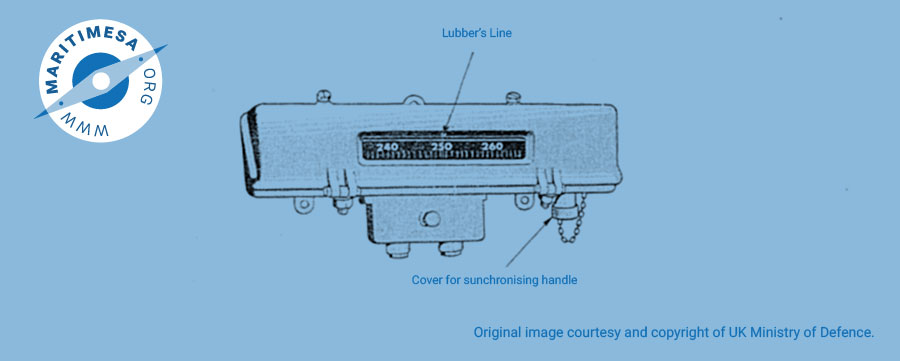Except for small recreational vessels, most vessels are equipped with two types of compass, namely a gyro and a magnetic compass. The former is used as the primary compass with the latter as back-up in the event of gyro or power failure. Since the latter makes use of the earth’s magnetic field and is not reliant on electrical power it will not be discussed in this module.
Except for small vessels, most sea-going vessels carry two gyro compasses which operate independently of one another, thus providing the navigator with a back-up in the event that one of the gyros fails. They operate on the principle of a very fast spinning wheel which has the attribute of rigidity in space and keeps its direction provided no external force is applied to it. Good examples of this phenomena are the bicycle and the motorbike which make use of the gyroscopic effect of their swiftly rotating wheels to remain in a balanced upright position.
The gyro compass comprises a well balanced wheel spinning at a very high velocity around an axis mounted in bearings with minimal friction and suspended in gimbals which allow it to turn or tilt freely. In order to counter the east-west movement of the earth’s rotation and the north-south movement of a vessel or craft carrying the gyro a liquid/mechanical correcting system is fitted to the compass which makes it north (true north) seeking. By attaching a compass card to the gimbals and aligning its north/south line with the axis of the spinning gyro, the gyro will become a compass from which true north can be obtained.

Old type Sperry gyro compass.

Modern Sperry gyro compass.
In order to reduce the effect of the rolling/pitching movement of the vessel, the gyros are usually mounted as near to the centre of the vessel as possible. From a static state it takes the gyro compass a while for it to stabilise and settle down after being switched on. Therefore it is usually switched on a few (4 -6) hours prior to sailing.
In order to use the direction supplied by the gyro compass, a sensor system is built in to the compass which feeds a number of repeaters situated on the bridge, bridge wings, steering positions, emergency conning and steering positions and other items of navigation equipment such as the radar, electronic chart displays and radio direction finders. In the case of the bearing repeaters situated on the bridge wings and the centre of the bridge, the repeaters are mounted in a special metal stand called a pelorus.They are mounted on gimbals to allow for the pitching and rolling of the ship and are equipped with a removable azimuth circle to facilitate the taking of bearings.

Gyro compass repeater mounted on the bridge wings.
The accuracy of the compass should be checked regularly against terrestrial navigation marks (transits) and when out of sight of land, by taking amplitudes and azimuths of the sun. Regular comparisons should also be taken of the heading of the gyro with that of the magnetic compass especially after altering course.

Gyro compass strip repeater usually mounted inside the bridge.


